Menu
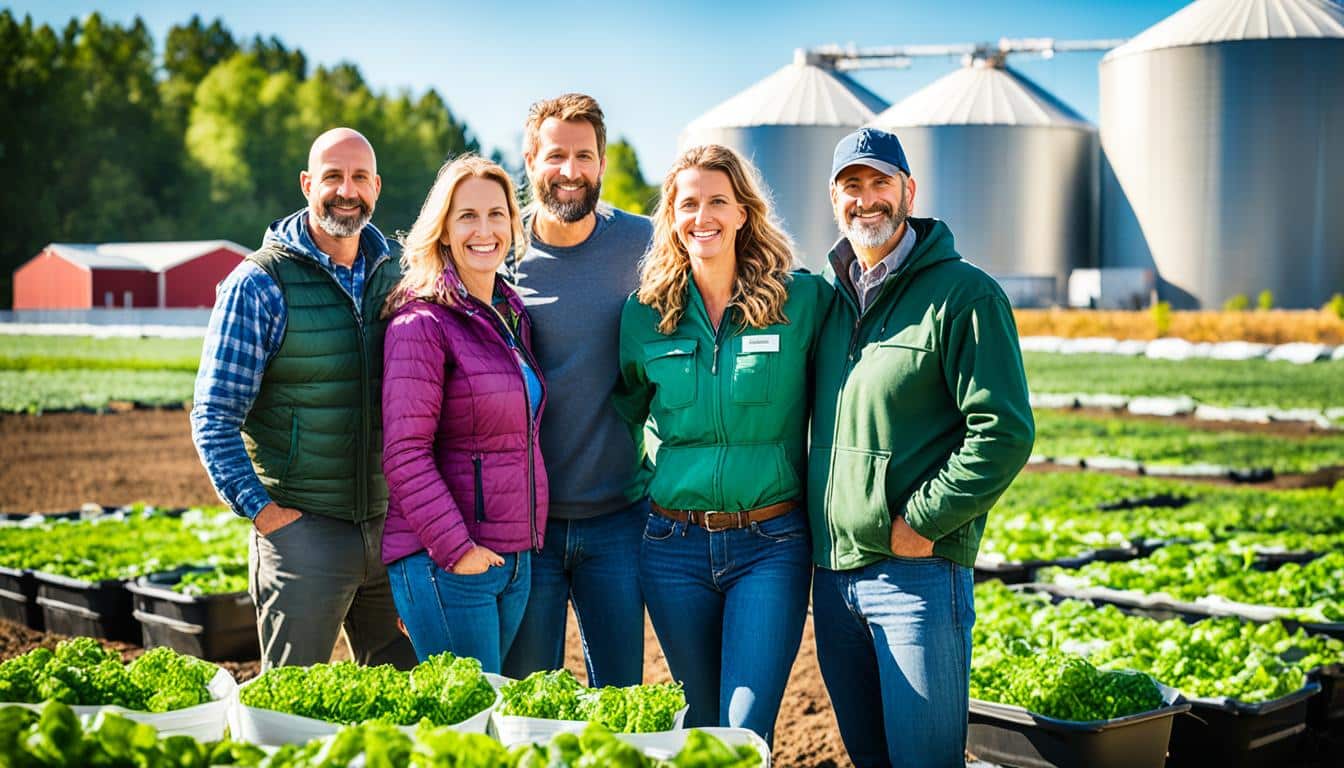
Almost 282 million people from 59 countries faced severe hunger in 2023. This marked an increase of 24 million from the year before.
Food security is a big issue globally. Prices of food are rising faster than the prices of other things. This is happening in nearly half of the world’s countries, affecting people with all levels of income differently.
Maize prices are up by 15% since January 2020. Wheat has seen a 3% price rise, but rice prices have soared by 47%. We need to act quickly and with a plan to ensure everyone can buy healthy food. The World Bank has put up $45 billion to help, showing that we need to work together on this issue.
Food security means everyone has enough safe and healthy food that fits their culture and diet. It’s key for growing the economy, keeping people healthy, and staying stable. We need to plan for better food access and supply for the future.
It’s not just about having food. It must be good for you, safe, and match your way of life. Solving food security issues is super important for global health and wealth. It helps deal with many tough problems we all face.
The latest figures show many people around the world don’t have enough to eat. In 2021, about 828 million were hungry, which was a big jump from before. This big increase shows we need to act fast on food security.
| Year | People Affected by Hunger | % of Global Population |
|---|---|---|
| 2019 | 678 million | 8% |
| 2020 | 782 million | 9.3% |
| 2021 | 828 million | 9.8% |
In 2021, nearly 2.3 billion people didn’t have enough food, and 924 million had a very hard time. This included 31.9% of women but only 27.6% of men. It shows we need food solutions for everyone, including women, to be fair.
In 2020, about 3.1 billion people couldn’t afford to eat healthily. This means there are big money problems. Also, kids suffered a lot. 45 million under five were too thin, and 149 million didn’t grow well, showing we need to feed them better.
By 2030, about 670 million might still be hungry, which is not good news. So, dealing with food issues is incredibly important. Watching food prices go up for things like maize, wheat, and rice is a big warning. It shows how complex the food market is and why we need a better, smarter way to grow food.
Today, we face a huge issue known as the triple burden of malnutrition. This includes undernutrition, not getting enough of the right nutrients, and obesity. Almost 3 billion people all over the world are affected. Each type of malnutrition has its own difficulties and can cause health problems.

Not getting enough food is still a big worry, especially in places that are still developing. Take Attappadi in Kerala, India, for instance. There, over 40% of kids under five are stunted, showing they don’t get enough food. Nearly half of these kids are also too lightweight. This lack of healthy food can really harm how their bodies and brains grow, leading to health issues that can last a long time.
Not having enough crucial nutrients is a major part of the malnutrition problem. In Attappadi, a vast 91.2% of young children are anaemic, with half of them lacking iron. This lack of iron and other vitamins hurts their immune system, growth, and health. This makes the malnutrition cycle worse.
Obesity is becoming a problem in many places, including India. Less than 5% of Indian children are overweight now. But it’s predicted that by 2030, 27 million children in India will be obese. This will be 11% of the world’s obesity issue. The rise in obesity shows how these issues can exist together.
The connection between undernutrition, lacking vitamins, and obsesity is complex and hard to solve. We need broad strategies that cover health policies, education about nutrition, and global teamwork. By dealing with these problems together, we can find better food security answers for everyone.
Boosting agricultural productivity is key to global food security. By using new farming methods and tech, we can make more food worldwide.
Adopting innovative farming techniques is vital for better food production. Burkina Faso has given women prepared farm lands. This helped clear 7,820 hectares for rice farming, helping 30,000 producers. About 45% of these farmers are women.
This effort increased rice production by 15,000 tons in 2014. This was possible with better tools and methods. It shows the impact of empowering farmers.
Modernising how we manage livestock also works well. For instance, building 459 modern chicken coops has lowered bird deaths. Now, 54% of local birds are safe from Newcastle disease. By using sustainable farming, we not only get more food but protect it better too.
Using agricultural technology hugely boosts farming. Things like precision farming help farmers use resources smartly. This cuts down waste and raises how much we can grow, using less land, water, and money.
Warrantage schemes, where farmers hold grain as credit, have also helped. 222 such schemes, under a special project, stored 4,700 tons of grain. This helped farmers get $700,000 in credit. They used this to buy farming tech, making their farms more productive.
Also, genetic engineering gives us seeds that grow more food and resist diseases. This fights climate issues and helps agriculture last longer. By using smart techniques and tech, we can keep poverty low, food stable, and ensure we have strong food systems. Fixing low productivity helps everyone, especially small farmers in poor countries.
Climate change greatly affects our ability to grow food. because of climate change, more people around the world are going hungry. In June 2022, 345 million people in 82 countries faced food insecurity. regions hit the hardest include Sub-Saharan Africa, South Asia, and Southeast Asia.
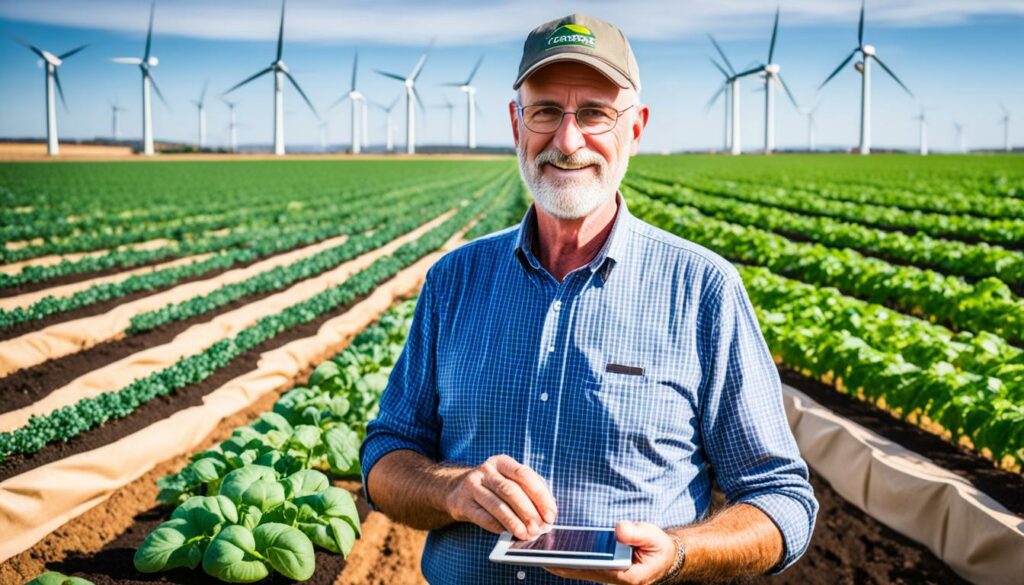
Climate change messes up the weather, causing heatwaves, heavy rain, and droughts. This hurts food production. Rising temperatures and lack of water threaten food security.
If we don’t act, by 2030, 43 million people in Africa may fall into poverty HaphSc through climate change, our food system causes a lot of greenhouse gas emissions. It’s almost as much as the energy sector. So, we need to fight these issues for a better future.
To make sure we have enough good food, we need to farm smarter. This means using water better with new tech and taking care of the soil. We also need to grow plants that can survive droughts.
Farmers can also use services like loans and insurance to protect themselves from the weather. This helps them stay in business even if the crops suffer.
Using farming that helps the environment and planting more trees can make farms stronger. For example, in Mali, a plan aims to help 1.8 million people with better farming. Having places to store food well, like warehouses and cold storage, also stops food from going to waste.
| Region | Population at Risk | Key Challenges | Climate-Smart Strategies |
|---|---|---|---|
| Sub-Saharan Africa | 80 million | Droughts, poverty | Drought-resistant crops, financial aid |
| South Asia | 55 million | Floods, heatwaves | Optimising water use, agroforestry |
| Southeast Asia | 35 million | Heavy rainfall, soil degradation | Improving soil health, early warning systems |
By improving how we predict bad weather farmers can get ready when trouble comes. Countries working together and sharing what they know can also help. By doing these things, we can make sure we have enough good food in the future.
Food security in low-income countries is a big challenge. This is made worse by high food prices and limited farming. To fight this, we need new ideas that help communities grow stronger. More people can have enough to eat by focusing on sustainable farming and community gardens.
Sustainable farming is key to helping poor countries have enough food. It means farming in ways that are good for the earth. This includes keeping the soil healthy and using resources wisely. With fertiliser prices dropping, now’s a good time to use better farming methods. These can grow more food without harming the planet.
The Corredor Seco Food Security Project in Honduras shows how good these ideas are. It helped over 12,000 families to get more food, jobs, and rely less on food from other places. The World Bank’s big investment targets to help around 335 million people in total. This proves that such farming projects can make a real difference in poor countries.
Community gardens are a great way to improve food security in poor areas. They let locals grow their own food, fresh and healthy. This helps fight high food prices. They also bring people together and make them stronger against not having enough food.
Such gardens can also give women and young people more chances. This helps make society fairer and lets people earn a living. This is all part of a bigger plan for careful growth. In places hit by droughts like Southern Africa, these gardens are a lifeline against not having enough food.
In the end, making sure there’s enough food in poor countries needs smart farming and local gardens. These ideas help people to help themselves. They fight unfairness and make sure there’s always good food to eat. This makes everyone stronger and happier.
It’s vital that everyone can get *access to nutritious food*. This is important for both our health and as a right. Over 500,000 deaths a year in the United States are linked to bad food choices. This makes poor nutrition a major health issue.
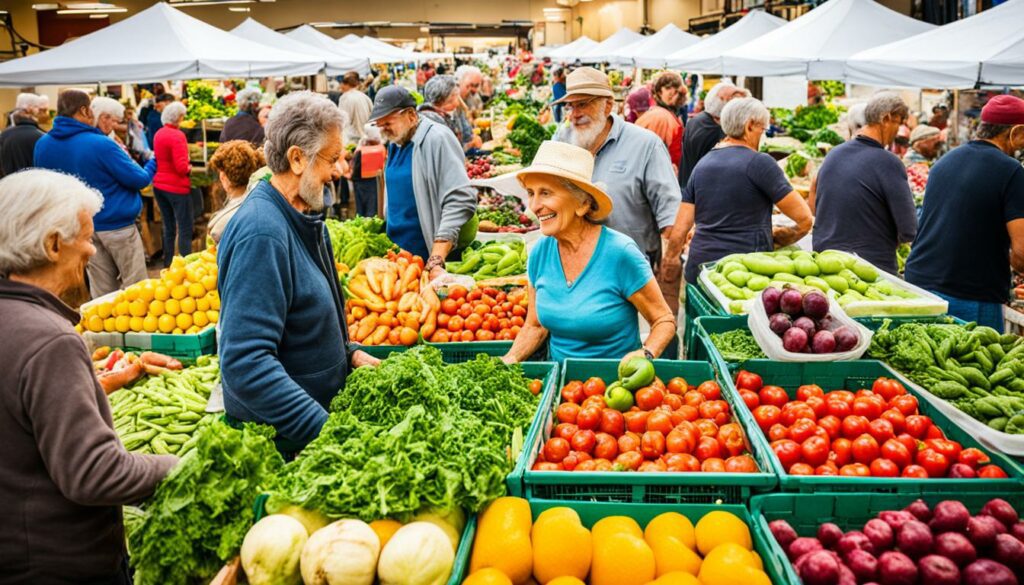
*Universal food access* involves many key aspects. It means food must be easy to find, affordable, of good quality, and match our different cultures. Sadly, Americans’ diet quality scores only 59 out of 100. This shows most people are not eating as well as they should. It’s clear we need to do more to provide healthy food fairly, particularly for those at risk.
Recent studies show Black and Indigenous children in the US are more likely to be obese than white children.
Creating fair food systems is a big goal. The USDA works towards this with four main areas in mind. These are Support, Healthy Food, Working Together, and Fair Systems. A huge 85% of the US’s healthcare spending deals with health problems from poor diets. It proves how key universal food access is for our overall health care.
The GAFSP and CGIAR, supported by the World Bank, work on global food and nutrition security. Food insecurity leads to various health problems in adults. It also affects society as a whole. This shows how linked *access to nutritious food* is to health and society.
By fixing inequalities in our food systems, we can start to solve big issues. It puts us on the path to making sure everyone can get healthy food.
Reducing food waste is key to better global food security and cutting down on waste. Shockingly, a third of the world’s food is wasted. This makes it a very serious issue. If we understand why food is wasted and start using better ways, we can reduce harm to our planet and save money.
Waste happens for many reasons, affecting every country. Bad farming methods and not keeping food fresh are big issues. Then, there’s the problem of food going bad due to poor storage and transport. People buying too much and not planning their meals well also adds to the waste at home.
To fight food waste, we need to do many things. Good storage and transport keep food fresh longer. Teaching people about the value of cutting waste and how to store food better also helps.
Governments, non-governmental organisations (NGOs), and businesses need to work together. Starting food donation programs and making food dates clear can cut down on confusion. A US initiative brings these groups together to reduce waste more effectively.
| Factor | Impact | Solution |
|---|---|---|
| Agricultural Inefficiencies | Post-harvest losses, spoilage | Improved harvesting techniques, better storage |
| Inadequate Transportation | Food spoilage during transit | Enhanced logistics, cold chain management |
| Consumer Behaviour | Over-purchasing, improper meal planning | Education, awareness campaigns |
By embracing these ways of reducing waste, we can cut down on food waste significantly. This mission supports both global food safety and a future where we use resources wisely.
Sustainable food systems are essential for feeding the world’s population. They also protect the earth. We need to change the way we produce food to reduce harmful effects, such as greenhouse gases and heavy water use.
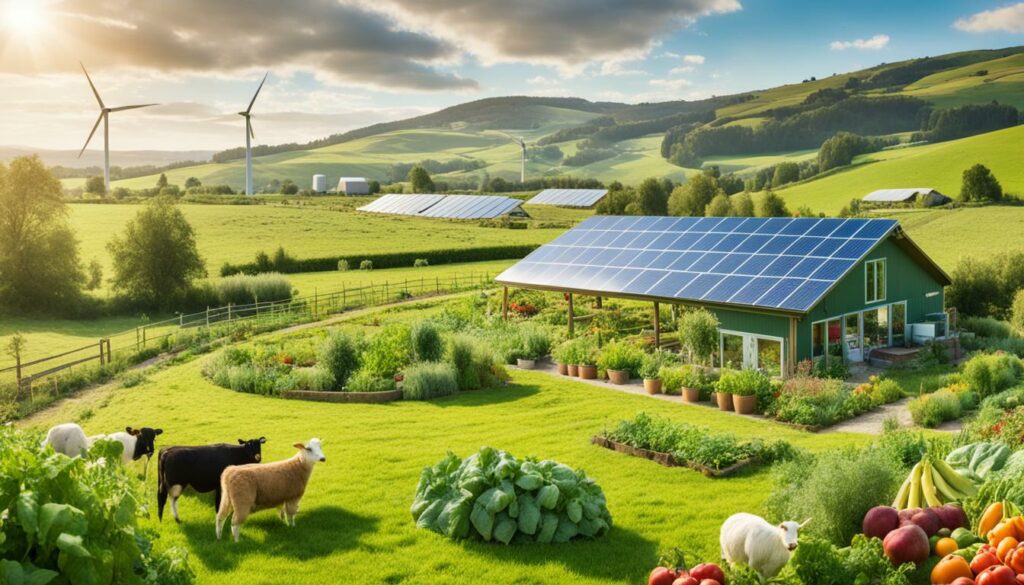
In 2022, over 9% of the world’s people did not have enough to eat. This shows we urgently need to fix our food systems. The United Nations’ goal to end hunger by 2030 requires our food systems to be good for people, the planet, and the economy.
Many poor people live in the countryside and farm small plots of land. They are much poorer than those who don’t farm. Using sustainable methods can help them earn more and escape poverty. We, in rich countries, also need to eat and use resources more wisely. If everyone lived like us, we would need more than five planets.
We are making progress in making food systems better. This has created jobs outside of farming and more food options in some countries. But, there are still big problems. Small farmers find it hard to sell their produce, and unhealthy processed foods are becoming more common. Tackling these challenges is key to making our food systems strong and fair for everyone.
| Key Statistics | Values |
|---|---|
| Global Population Facing Chronic Hunger (2022) | 735 million |
| Contribution to Greenhouse Gas Emissions by Unsustainable Practices | ~ One-third |
| Freshwater Usage for Agriculture | ~ 70% |
| Global Energy Usage in Food Production and Supply | ~ One-quarter |
| Projected Population Facing Hunger by 2030 | 660 million |
| Increase in Chronic Hunger (2019-2022) | 122 million |
A full look at the entire food system is crucial for big changes. The FAO’s food system wheel shows the different parts like farming, making, selling, and eating food. Seeing all these parts helps us ensure food systems work well, now and in the future.
Food sovereignty and fair trade practices are about communities taking back control of their food systems. They look at farming, market access, and using resources for healthy agriculture. This helps local farmers by not making them dependent on big global companies.
In spring 2021, students and partners in Seattle worked together on food justice and sovereignty. They focused on the need for everyone to access healthy and safe food. This work included looking at how they could help overseas, like in China and Vietnam, despite COVID-19 limits.
Local groups like Black Farmers Collective joined in. Projects aimed at making equitable food systems by supporting local farmers. This was done through promoting fair trade practices.
The teams made educational materials like infographics to spread the word about fair food. They also had goals to make food access better, promote fairness in farming, and recycle waste. Improving farm safety and giving farmers better land rights were important too.
The idea of food sovereignty gained strength after the Nyéléni Declaration in 2007. La Via Campesina, in 1996, highlighted how crucial it is for local people to direct their food futures. A global network of small farmers and fisherfolk strive for this control to make food systems last and resist change.
| Statistics | Global Impact |
|---|---|
| 80% of the world’s food produced by family farming | Uses only 30% of the world’s agricultural land |
| 20% of the world’s food produced by corporate agriculture | Uses 70% of the world’s agricultural land |
| 2 billion people lack access to nutritious food | 690 million people are hungry worldwide |
Food sovereignty and fair trade are vital for a fair food system. By treating farmers well and fairly pricing their goods, local economies can grow. These practices align with ensuring food security for all, fighting hunger and inequality.
International aid is crucial in tackling food security issues worldwide. Over 800 million people lack food daily. Most of these are in rural places and live in poverty. The world’s population will hit 9 billion by 2050, needing food production to double.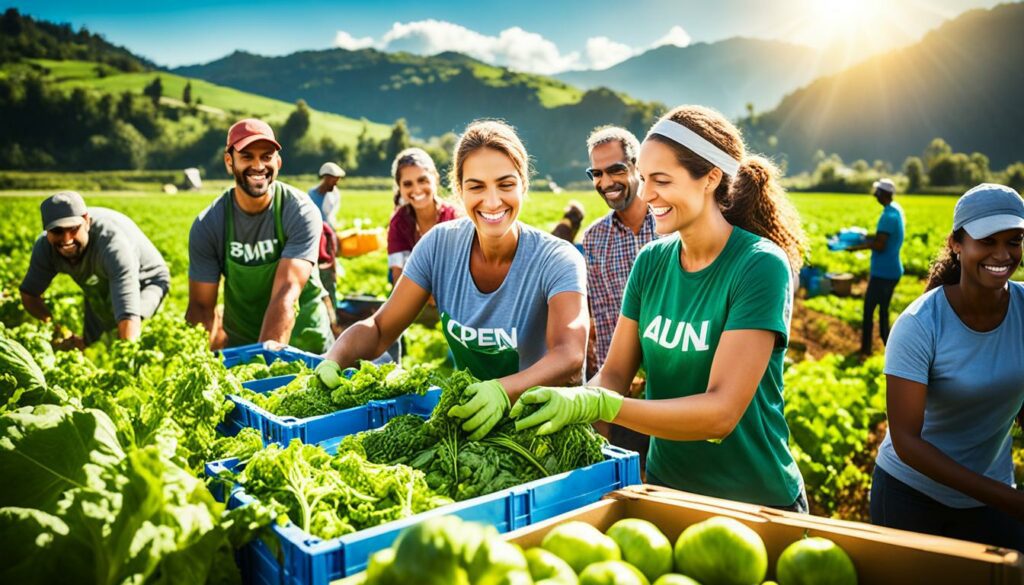
The U.S. Government has shown it’s serious about fighting hunger through the Global Food Security Act. Its efforts include the Feed the Future plan, working closely with many partners. Together, they promote agriculture, nutrition, and build resilience. The USDA has also helped, aiding 34 million people with nearly $1.6 billion.
Successful projects that help with food security stand out. The McGovern-Dole Program has fed over 16 million of the poorest children. The Borlaug Fellowship Programme, on the other hand, helped 272 scientists. It focused on food safety and rural development, leading to key advances. Another, the Cochran Fellowship Programme, has trained 1,732 individuals globally in agriculture and biotechnology. This sharpens the skills of people in developing countries to meet their food needs.
The Global Agriculture and Food Security Programme began in 2010, funding projects in 18 low-income countries with $658 million. Feed the Future also invested heavily, more than doubling their research support. Evidence shows these efforts have significantly helped. For instance, U.S. poultry exports to Sub-Saharan Africa soared by 180% from 2009 to 2011.
Conclusively, international aid greatly supports food security work. These efforts, with plenty of support and cooperation, are making a difference in cutting down hunger and lifting agricultural output around the globe.
In tackling food security issues, local governments are key. They introduce important policies and changes. Being close to the people lets them design solutions that are a perfect fit. This means quick action and clear results. They focus on several key points like unfair treatment, helping new farmers get land, city farming, and including food access in emergencies.
Last May, the North American Local Food Dialogue brought together over 40 groups, including local government teams and community groups. They talked about how to make our food systems more inclusive, secure, and fair. One big point was the need to really listen to those affected by food policies, such as health and poor nutrition in BIPOC communities.
They came up with important ideas and ways to improve food security, such as:
It’s really important to gather data, like mapping where food is available, to know what’s missing and where to focus. More cities are adding food safety to their crisis plans, making sure there’s always enough local food. I looked at 36 local food policies and found a move towards joining up different food efforts. This creates a more organised food action across different areas.
These changes are making a difference in many places. In Europe and Central Asia, they’re putting a lot of effort into fixing eating habits. This shows a worldwide push to meet local food needs. By making sure local governments do their part and have a strong say in food security, we can really change how these big problems are solved. And we can make lasting changes to food safety.
In today’s world, building resilience in food systems is crucial. It helps communities adapt and thrive against various challenges. These include climate change, financial ups and downs, and worldwide tensions that threaten our food security. Developing resilient food systems is key. They should be able to manage any disruptions and recover fast. This way, people will keep getting the healthy food they need.
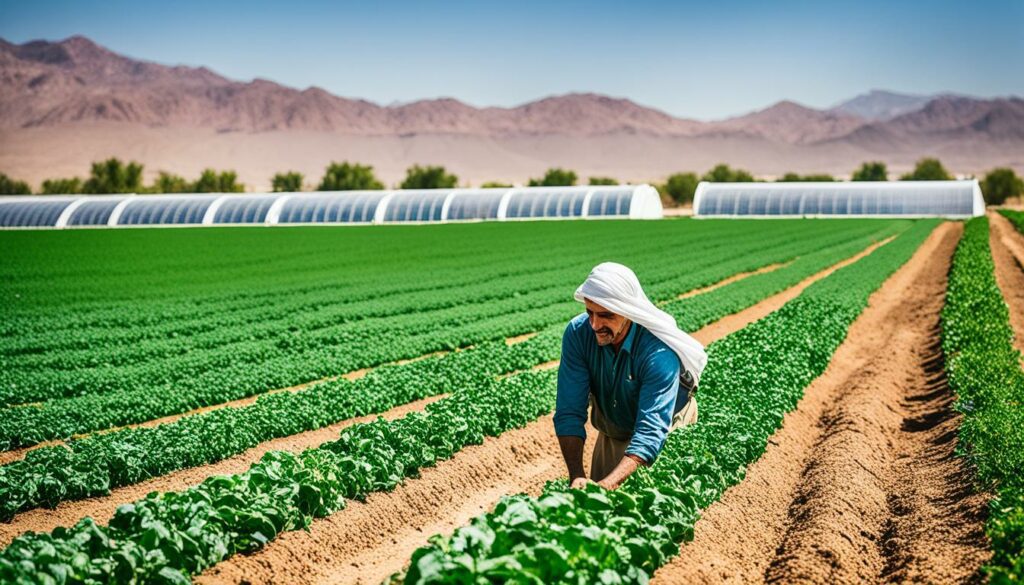
Right now, about 258 million people face severe food shortages. And by 2030, around 1.3 billion young people will increase food needs. We must make our food systems more sustainable to handle this growth. It’s vital to make local food production stronger. This means using different sources for food and making smart plans to deal with risks. These steps are important for keeping our food systems stable.
Gender inequality in food and farming costs the global economy 1 trillion dollars each year. This shows the fight for fair food systems is tough. We need to make our food systems strong against climate change. To do this, we should use farming methods that can cope with the climate. These methods make the land and crops healthier, helping the food systems work better.
About 1.5 billion people depend on lands that are losing quality. Taking care of these lands with smart practices can boost our food systems’ strength, even in places often affected by conflict. For example, more than 80% of the Sahel area faces desperate food shortages and fights over land. This tells us how important it is to help these areas.
Focusing on building strong food systems is not just about dealing with risks. It’s also about making sure farming and the ways we deliver food can change and grow. It is critical for dealing with the many threats to our food supply. This way, communities can be ready for any future challenges.
In tackling food deserts and other issues, community involvement is crucial. It helps create fair and lasting food systems. This is especially important in areas hit hard by food insecurity.
Black neighbourhoods often lack easy access to fresh, cheap food. They also face poverty more. By starting local projects and working together, these places can get stronger and find better food.
Grassroots movements play a big part in food security. They use local knowledge to make solutions just right for their area. For example, in Rockford, Illinois, community gardens have brought better food and health. In Kibera, Nairobi, urban farming has made people closer and helped with food needs.
In 2020, studies found that working together locally can make food and communities stronger. People depend less on help from outside and learn to stand on their own.
Cooperation is key in fighting food insecurity. In Saint Lucia, talking with all parties helped make better food rules. This shows how working together can really change things. In rural America, teams have focused on helping with food, food deserts, and fighting hunger. Their work aims to make sure these systems last.
In places like Baft-Kerman and Nairobi, bringing people together has cut hunger and made communities tougher against food issues. Joining forces lets communities gather tools, tips, and plans to beat food shortages.
| Key Area | Research Findings |
|---|---|
| Urban Agriculture (Kibera, Nairobi, Kenya) | Improved food security and social capital (2013 study) |
| Community Gardens (Rockford, IL, USA) | Enhanced food access and community well-being (2017 study) |
| Participatory Agroecology (Smallholder Farming) | Positive impact on social capital (2020 study) |
| Food Policy (Saint Lucia, Caribbean) | Impact of stakeholder interactions on national policy (2017 study) |
Joining local and bigger efforts makes communities stronger and more in control of their food. These steps help make sure everyone has enough to eat. By starting at the local level, we can build food systems that last, work anywhere, and bring everyone in.
The path to better food is filled with challenges. Around 3 billion people are struggling with not enough to eat or the wrong kind of foods. At the same time, 1.9 billion are overweight. This situation is tough, but we have to use new technologies, change some rules, work together, and get help across borders to solve these issues.
The way we grow our food needs to change. We must find farming methods that fight and adjust to the changing climate. By 2050, we’ll have 9.3 billion mouths to feed. But, every year, we lose one third of our food, wasting about $750 billion. Cutting down on this waste is key to making sure everyone has enough to eat.
Many things affect whether people can eat well. Poverty, education, what people earn, and even men and women’s different roles have a big influence. More and more people will be living in cities in 2050. This shift changes how we get our food. Working together at local levels, using lots of information, is important. This can make our food systems strong and fair for everyone, even as our world’s population grows.
Food security means everyone can get enough safe and nutritious food. This includes food that fits their culture and dietary needs. It’s crucial for economic growth, better health, and keeping society stable.
Undernutrition, lack of micronutrients, and obesity create a big issue globally. Around 3 billion people face these problems. They cause stunted growth, anaemia, and diseases. Sadly, these issues often appear together, making solving them harder.
Using better seeds, high-tech farming like precision farming, and a focus on sustainability helps. Tools like drones and satellite images are used to watch and improve farming. This boosts how much food we can grow.
Climate change messes up the weather, causing droughts and floods. This makes it harder to grow food. Smart farming methods like using crops that can handle drought and better ways to water plants can make farming stronger.
Low-income places struggle a lot with making sure everyone has enough to eat. They have less money, not enough jobs, and the farms and roads aren’t always good. Projects that help farmers and local gardens can sometimes help people grow more of their food.
To ensure everyone can eat well, we need fair systems that don’t leave anyone out. It’s about making food affordable, keeping it safe, and respecting what people like to eat. We need to focus on helping those that are most in need.
Bad farming, not storing food well, and how we shop all cause food to be wasted. We can do better by getting better at storing, moving food well, and helping people learn to not waste what they buy.
A sustainable food system covers everything from how food is made to how we eat it. It tries to be long-lasting without harming the planet too much. This way, it stays good for everyone and helps the local economy.
Food sovereignty and fair trade mean communities get a say in how they farm. Fair trade makes sure farmers get paid fairly, helping them keep going. This supports the local economy and makes sure there is enough good food for people.
International help steps in with food when there’s a crisis and helps make farming better over time. Big organisations, like the World Bank, support these efforts with a lot of money. They teach ways to fight hunger around the world.
Local leaders can help make sure there’s enough good food by making rules that fit their area. This might include changing how support is given, planning where to grow food, and teaching nutrition. It’s about making food easier and cheaper to get locally.
Being ready for problems means our food supply won’t easily run out. It’s about making food in different ways and being prepared for tough times. This way, everyone can keep eating well, even when things get hard.
Communities coming together can make a real difference through their own projects and by sharing knowledge and speaking out. This kind of teamwork helps everyone own the issue and find solutions that really work for them.